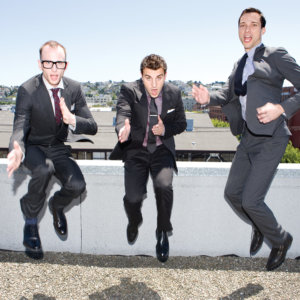Strategic Decisions for Multisided Platforms
Multisided platforms such as eBay and Facebook create value by enabling interactions between two or more customer groups. But building and managing a winning platform isn’t easy.
Multisided platforms (MSPs) are technologies, products or services that create value primarily by enabling direct interactions between two or more customer or participant groups. Prominent examples of MSPs and the participants they connect include Alibaba.com, eBay, Taobao and Rakuten (buyers and sellers); Airbnb (dwelling owners and renters); the Uber app (professional drivers and passengers); Facebook (users, advertisers, third-party game or content developers and affiliated third-party sites); Apple’s iOS (application developers and users); Google’s Android operating system (handset manufacturers, application developers and users); Sony’s PlayStation and Microsoft’s Xbox gaming consoles (game developers and users); American Express, PayPal and Square (merchants and consumers); shopping malls (retail stores and consumers); Fandango (cinemas and consumers); and Ticketmaster (event venues and consumers).1
As these examples illustrate, MSPs include some of the largest and fastest-growing businesses of the past decade. Why? Successful MSPs create enormous value by reducing search costs or transaction costs (or both) for participants. As a result, MSPs often occupy privileged positions in their respective industries; most other industry participants revolve around and depend on MSPs in important ways. (See “How Multisided Platforms Differ from Product Platforms and Resellers.”)
How Multisided Platforms Differ from Product Platforms and Resellers

This article offers an analysis of four fundamental strategic decisions and associated trade-offs that set MSPs apart from other types of businesses and that every MSP entrepreneur and investor should carefully consider. (See “About the Research.”) These challenges are the following:
- the number of sides to bring on board;
- design;
- pricing structures; and
- governance rules.
Basic Features of Multisided Platforms
An important feature of most MSPs is that the value to customers on one side of a platform typically increases with the number of participating customers on another side.
References
1. MSPs are a straightforward generalization of the two-sided platform — from two sides to multiple sides — as defined in Boudreau and Lakhani (2009). Boudreau and Lakhani’s “integrator platforms” and “product platforms” are not MSPs. Integrator platforms do not enable direct interactions; instead, they take full control and ownership of products from “outside innovators” (suppliers) before selling them to customers. Thus, they are equivalent to resellers as defined by Hagiu and Wright (2013). Meanwhile, product platforms (for example, Gore-Tex) do not have any relationship with customers: only outside innovators affiliate with such platforms.
MSPs include some but not all the “industry platforms” studied by Gawer and Cusumano (2008). Many industry platforms, such as Windows and PlayStation 3, are MSPs because they enable direct interactions between users and game or application developers. In particular, my requirement of direct interactions is aligned with the notion that industry platforms do not fully control what third parties do or build on their platforms. On the other hand, some industry platforms are not MSPs: they are equivalent to the product platforms in Boudreau and Lakhani (2009). One example is the electronic ink technology developed by E Ink, which is the key component in Amazon’s Kindle and other e-readers. E Ink functions merely as a component supplier to Amazon and others. Note, however, that the Kindle is an MSP: It allows Kindle users to buy and read e-books supplied by independent publishers. Both sides (users and publishers) affiliate with Amazon’s Kindle, not with E Ink. Principles for dethroning incumbent platforms apply to MSPs as well as to non-MSP product platforms, such as E Ink. See K.J. Boudreau and K.R. Lakhani, “How to Manage Outside Innovation,” MIT Sloan Management Review 50, no. 4 (summer 2009): 68-76; A. Hagiu and J. Wright, “Do You Really Want to Be an eBay?” Harvard Business Review 91, no. 3 (March 2013): 102-108; A. Gawer and M.A. Cusumano, “How Companies Become Platform Leaders,” MIT Sloan Management Review 49, no. 2 (winter 2008): 28-35; and F.F. Suarez and J. Kirtley, “Dethroning an Existing Platform,” MIT Sloan Management Review 53, no. 4 (summer 2012): 35-40.
2. This is distinct from one-sided network effects (also known as direct network effects), which occur when the value to a customer increases with the number of other customers on the same side (or of the same type) that participate. One-sided network effects can be exhibited by products or services that are not MSPs. For example, Skype exhibits one-sided network effects but is not a MSP. Furthermore, some MSPs exhibit both one-sided and cross-side network effects. For instance, Facebook creates one-sided network effects among its users and cross-side network effects between users and app developers.
3. For a more detailed discussion of cross-side network effects for both MSPs and non-MSPs, see A. Hagiu and J. Wright, “Multi-Sided Platforms,” working paper no. 12-024, Harvard Business School, Boston, October 2011.
4. “Switching costs” refers to the costs incurred by users to abandon an MSP and switch to a competing MSP. The costs incurred by MSP users who do not switch MSPs but also join a competing MSP are known as “multihoming costs.” See T. Eisenmann, G. Parker and M.W. Van Alstyne, “Strategies for Two-Sided Markets,” Harvard Business Review 84, no. 10 (October 2006): 92-101. Also see A. Hagiu and D. Yoffie, “Network Effects,” in “The Palgrave Encyclopedia of Strategic Management,” ed. M. Augier and D.J. Teece, August 2013, www.palgraveconnect.com.
5. D. MacMillan, “LivingSocial Falls to a Quarter of 2011 Value in Latest Funding,” February 22, 2013, www.bloomberg.com.
6. S. Raice and S. Woo, “Groupon’s Boston Problem: Copycats,” Wall Street Journal, July 8, 2011.
7. Exceptions arise when MSPs need to provide additional services (such as customer support) that do not scale well or may even lead to diseconomies of scale.
8. See D. Einstein, “Microsoft Betting BIG on Cloud With Windows 8 and Tablets,” October 11, 2012, www.forbes.com.
9. D. Yoffie and L. Kind, “LinkedIn Corporation, 2012,” Harvard Business School case no. 713-420 (Boston: Harvard Business School Publishing, 2012).
10. Apple briefly flirted with the three-sided model in the mid-1990s but discovered that its third-party OEM licensees did not help make any dent in the market share of Windows-based PCs and instead cannibalized Apple’s own sales. See D.B. Yoffie and M. Slind, “Apple Inc., 2008,” Harvard Business School case no. 708-480 (Boston: Harvard Business School Publishing, 2008).
11. H. McCracken, “Who’s Winning, iOS or Android? All the Numbers, All in One Place,” April 16, 2013, http://techland.time.com.
12. Ibid.
13. D.S. Evans, A. Hagiu and R. Schmalensee, “Invisible Engines: How Software Platforms Drive Innovation and Transform Industries” (Cambridge, Massachusetts: MIT Press, 2006).
14. A. Hagiu and D. Spulber, “First-Party Content and Coordination in Two-Sided Markets,” Management Science 59, no. 4 (April 2013): 933-949.
15. “eBay Inc. Reports Strong First-Quarter 2013 Results,” April 17, 2013, http://investor.ebayinc.com.
16. K. Regan, “Skype Write-Off Has eBay Seeing Red,” October 18, 2007, www.ecommercetimes.com.
17. D.S. Evans and R. Schmalensee, “The Industrial Organization of Markets with Two-Sided Platforms,” Competition Policy International 3, no. 1 (Spring 2007): 150-179.
18. A. Hagiu and B. Jullien, “Why Do Intermediaries Divert Search?,” RAND Journal of Economics 42, no. 2 (summer 2011): 337-362; and A. Hagiu and B. Jullien, “Search Diversion and Product Competition,” working paper no. 11-124, Harvard Business School, Boston, September 24, 2013.
19. N. Wingfield and J. Angwin, “Microsoft Adds Do-Not-Track Tool to Browser,” Wall Street Journal, March 14, 2011.
20. I. Steiner, “eBay Discontinues AdCommerce Ad Program for Sellers,” July 1, 2010, www.ecommercebytes.com.
21. Schmalensee (2011) provides an insightful analysis of the possible economic causes underlying the prevalence of such highly skewed pricing structures. He shows that they are not necessarily the result of profit non-concavities, as was suggested by Bolt and Tieman (2008), but can arise due to differences in demand structures across the multiple sides of an MSP. See R. Schmalensee, “Why Is Platform Pricing Generally Highly Skewed?,” Review of Network Economics 10, no. 4 (2011): 1-11; and W. Bolt and A.F. Tieman, “Heavily Skewed Pricing in Two-Sided Markets,” International Journal of Industrial Organization 26, no. 5 (2008): 1250-1255.
22. M. Armstrong, “Competition in Two-Sided Markets,” RAND Journal of Economics 37, no. 3 (autumn 2006): 668-691; B. Caillaud and B. Jullien, “Chicken and Egg: Competition Among Intermediation Service Providers,” RAND Journal of Economics 34, no. 2 (summer 2003): 309-328; A. Hagiu, “Two-Sided Platforms: Product Variety and Pricing Structures,” Journal of Economics and Management Strategy 18, no. 4 (winter 2009): 1011-1043; J.-C. Rochet and J. Tirole, “Platform Competition in Two-Sided Markets,” Journal of the European Economic Association 1, no. 4 (June 2003): 990-1029; and J.-C. Rochet and J. Tirole, “Two-Sided Markets: Where We Stand,” RAND Journal of Economics 37, no. 3 (autumn 2006): 645-666.
23. K. Boudreau and A. Hagiu, “Platform Rules: Multi-Sided Platforms as Regulators,” in “Platforms, Markets and Innovation,” ed. Annabelle Gawer (Northampton, Massachusetts: Edward Elgar, 2010); and Evans and Schmalensee, “Industrial Organization of Markets.”
24. A. Levy, “eHarmony Founder Breaks Up with Investors to Reboot,” December 3, 2012, www.bloomberg.com.
25. M.J. Piskorski, J. Mikolaj, H. Halaburda and T. Smith, “eHarmony,” Harvard Business School case no. 709-424 (Boston: Harvard Business School Publishing, 2008).
26. S. Kovach, “Frustration Builds with Apple’s Inconsistent Rules for App Developers,” April 13, 2013, www.businessinsider.com; and P. Viswanathan, “Android OS Vs. Apple iOS: Which Is Better for Developers?” May 24, 2011, About.com.
27. A. Elberse, A. Hagiu and M. Egawa, “Roppongi Hills: City Within a City,” Harvard Business School case no. 707-431 (Boston: Harvard Business School Publishing, 2008).
28. Boudreau (2012) provides compelling evidence of this phenomenon in the context of handheld-computing MSPs; see K.J. Boudreau, “Let a Thousand Flowers Bloom? An Early Look at Large Numbers of Software App Developers and Patterns of Innovation,” Organization Science 23, no. 5 (September-October 2012): 1409-1427.
29. A. Hagiu and D.B. Yoffie, “Brightcove, Inc. in 2007,” Harvard Business School case no. 712-424 (Boston: Harvard Business School Publishing, 2011); A. Hagiu and N. Fisher, “Brightcove, Inc. (B),” Harvard Business School case no. 713-436 (Boston: Harvard Business School Publishing, 2012).


 View Exhibit
View Exhibit
Comments (3)
Jacques X. SEGERS LYSSENS
Larry Kali
Aman Chowdhury